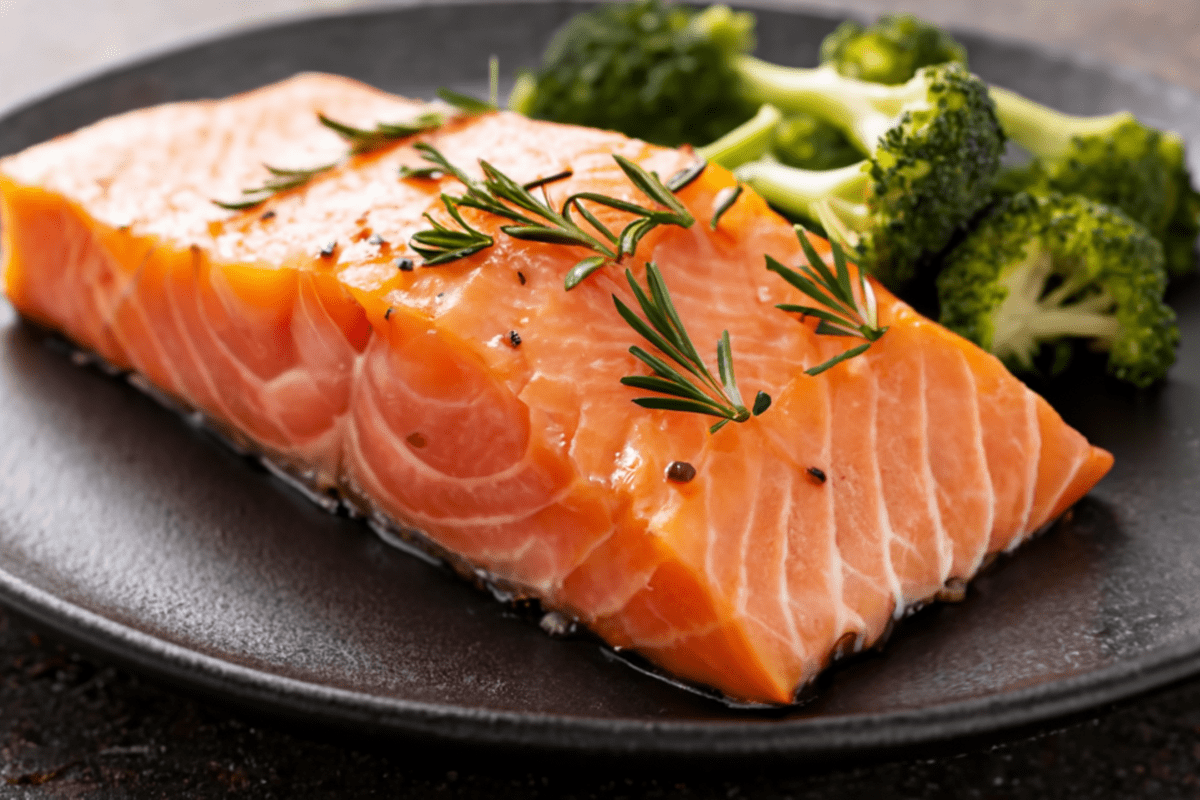Salmon is not only a delicious and versatile fish but also a powerhouse of nutrients that make it a staple in many diets. However, achieving that perfect, moist and flaky texture while preserving its natural flavors can be a challenge. What is the secret to the best salmon? Let’s dive into the tips and tricks that will elevate your salmon cooking skills to the next level.
Types of Salmon: A Key to the Best Salmon Dishes
Understanding the different types of salmon is crucial to preparing it perfectly. Each type has its own distinct flavor profile and texture:
- Atlantic Salmon: Commonly farmed, milder in flavor.
- Sockeye Salmon: Rich in flavor, deep red color, great for grilling.
- Coho Salmon: Milder taste, tender texture.
- King Salmon: Also known as Chinook, highest fat content, very rich flavor.
- Pink Salmon: Light flavor, often used in canned products.
Health Benefits of Salmon: Why It’s a Secret to the Best Diet
Salmon is renowned for its nutritional profile. It is rich in omega-3 fatty acids, which are essential for heart health. In fact, the American Heart Association recommends including fatty fish like salmon in your diet at least twice a week to reap the benefits of these essential fats. Additionally, salmon is a great source of protein, B vitamins, and selenium, making it a true superfood.
Key Benefits:
- Rich in omega-3 fatty acids.
- High in protein and low in saturated fats.
- Provides essential vitamins and minerals.
Secrets to Preparing the Best Salmon: Tips and Techniques
Selecting the Freshest Salmon: A Crucial Step to the Best Flavor
The first step in cooking the best salmon is selecting the freshest fish. Here’s what to look for:
- Smell: Fresh salmon should have a mild scent. If it smells overly fishy, it’s past its prime.
- Color: Look for bright, consistent color without any dark spots.
- Texture: The flesh should be firm to the touch, not mushy.
For sustainability-conscious consumers, choosing wild-caught salmon is often recommended. Wild-caught varieties not only offer a better flavor but are also a more sustainable choice. The Seafood Watch program provides guidance on the best sustainable options.
Marinades and Seasoning: Enhancing the Best Salmon Flavor
Marinating your salmon can significantly enhance its flavor. However, balance is key—over-marinating can overpower the delicate taste of the fish.
- Popular Marinades:
- Lemon and dill
- Soy sauce and ginger
- Garlic and herbs
- Seasoning Tips:
- Keep it simple: salt, pepper, and a dash of olive oil often suffice.
- Marinade time: 30 minutes is usually enough to infuse flavor without losing the natural taste of the salmon.
For a more in-depth guide on seasoning and preparing salmon, check out our Ultimate Salmon Recipe Guide: Baked, Grilled, and Pan-Seared Salmon Ideas.
Cooking Techniques: Achieving the Best Salmon Every Time
The cooking method you choose can make or break your salmon dish. Here are some of the best techniques:
- Grilling: Perfect for sockeye or king salmon, providing a smoky flavor.
- Tip: Preheat the grill and oil the grates to prevent sticking.
- Baking: Ideal for all types, especially when using a marinade.
- Tip: Bake at 400°F for 12-15 minutes for moist and flaky salmon.
- Pan-Searing: Quick and effective for a crispy skin and tender interior.
- Tip: Use a hot pan and cook skin-side down for 3-4 minutes before flipping.
If you’re deciding whether to bake or pan-fry your salmon, you can learn more about the best method in our article Is It Better to Bake or Pan-Fry Salmon?.
Serving Suggestions: The Best Ways to Serve Salmon
Once your salmon is perfectly cooked, it’s time to think about presentation and sides:
- Side Dishes:
- Steamed asparagus or broccoli.
- Quinoa or wild rice.
- Wine Pairings:
- Chardonnay or Sauvignon Blanc complement the richness of salmon.
- Presentation Tips:
- Garnish with fresh herbs like dill or parsley.
How to Store and Reheat Leftovers for the Best Salmon
If you’ve prepared more salmon than needed, proper storage is essential:
- Storage: Place cooked salmon in an airtight container and refrigerate for up to 3 days.
- Reheating Tips:
- Reheat gently at low heat to avoid drying out. A microwave can be used, but cover the salmon with a damp paper towel to retain moisture.
For more tips on enhancing the flavor of your salmon, check out What Can I Put on Salmon to Make It Taste Better?.
Frequently Asked Questions (FAQs)
Q1: How can I tell if salmon is cooked perfectly?
- The flesh should be opaque and easily flake with a fork. The internal temperature should reach 145°F.
Q2: Is it better to cook salmon with the skin on or off?
- Cooking with the skin on helps retain moisture and adds flavor. You can remove the skin after cooking if desired.
Q3: Can I marinate salmon overnight?
- While it’s possible, it’s best to marinate for no more than 30 minutes to avoid overpowering the fish.
Q4: What are some quick salmon recipes for busy nights?
- Pan-seared salmon with a side of steamed vegetables or a quick salmon salad with mixed greens and vinaigrette.
Q5: How long can I keep cooked salmon in the fridge?
- Cooked salmon can be stored for up to 3 days in the refrigerator.

